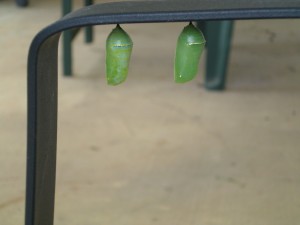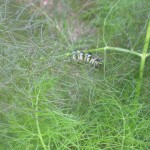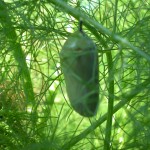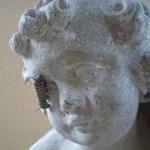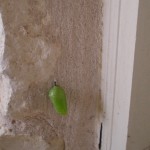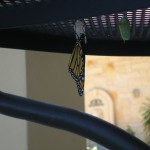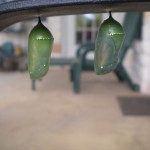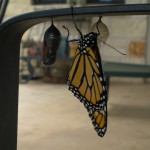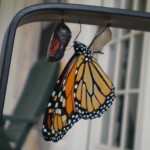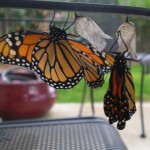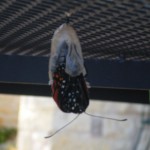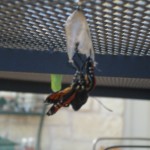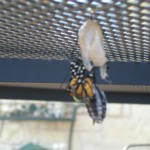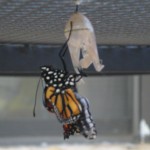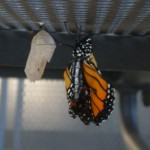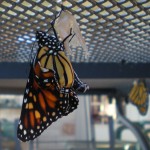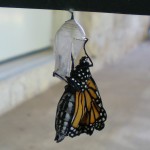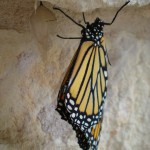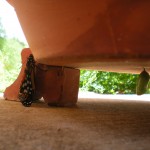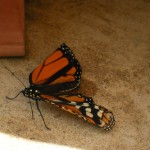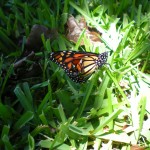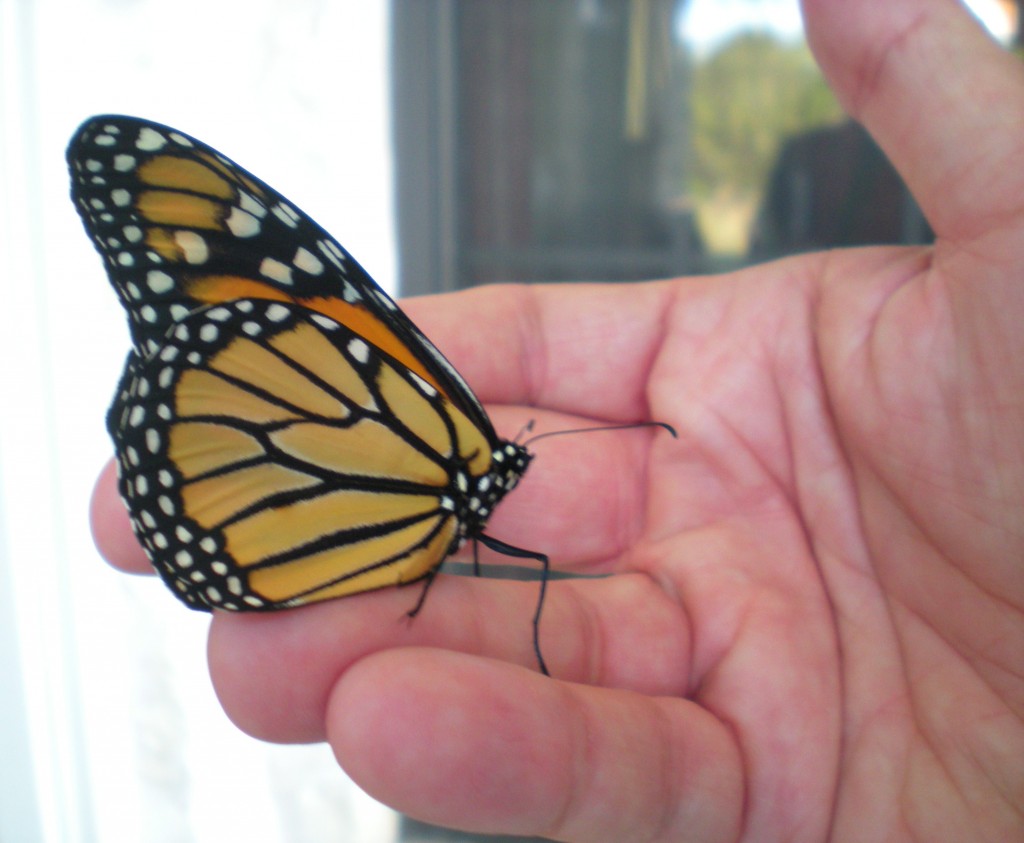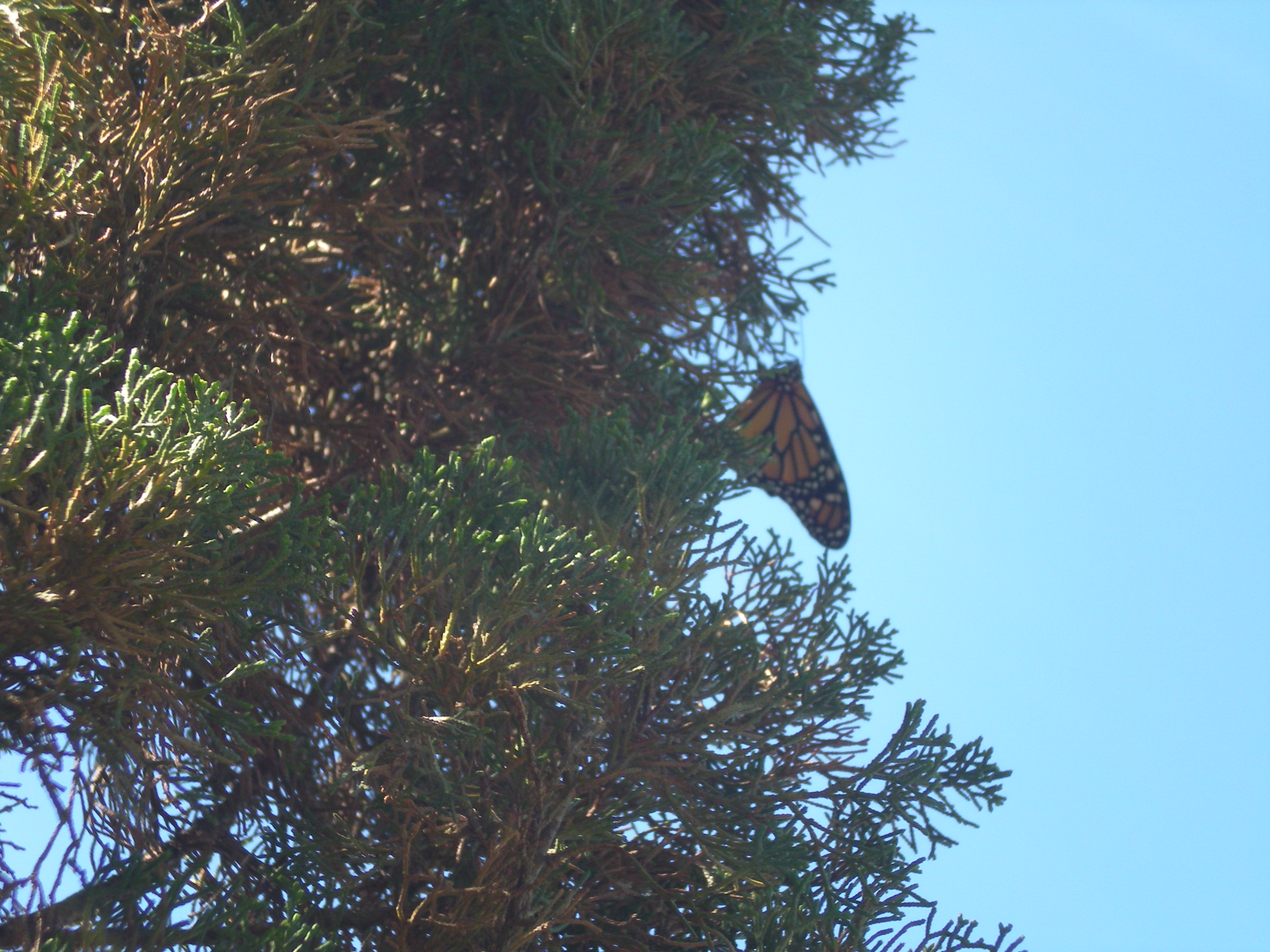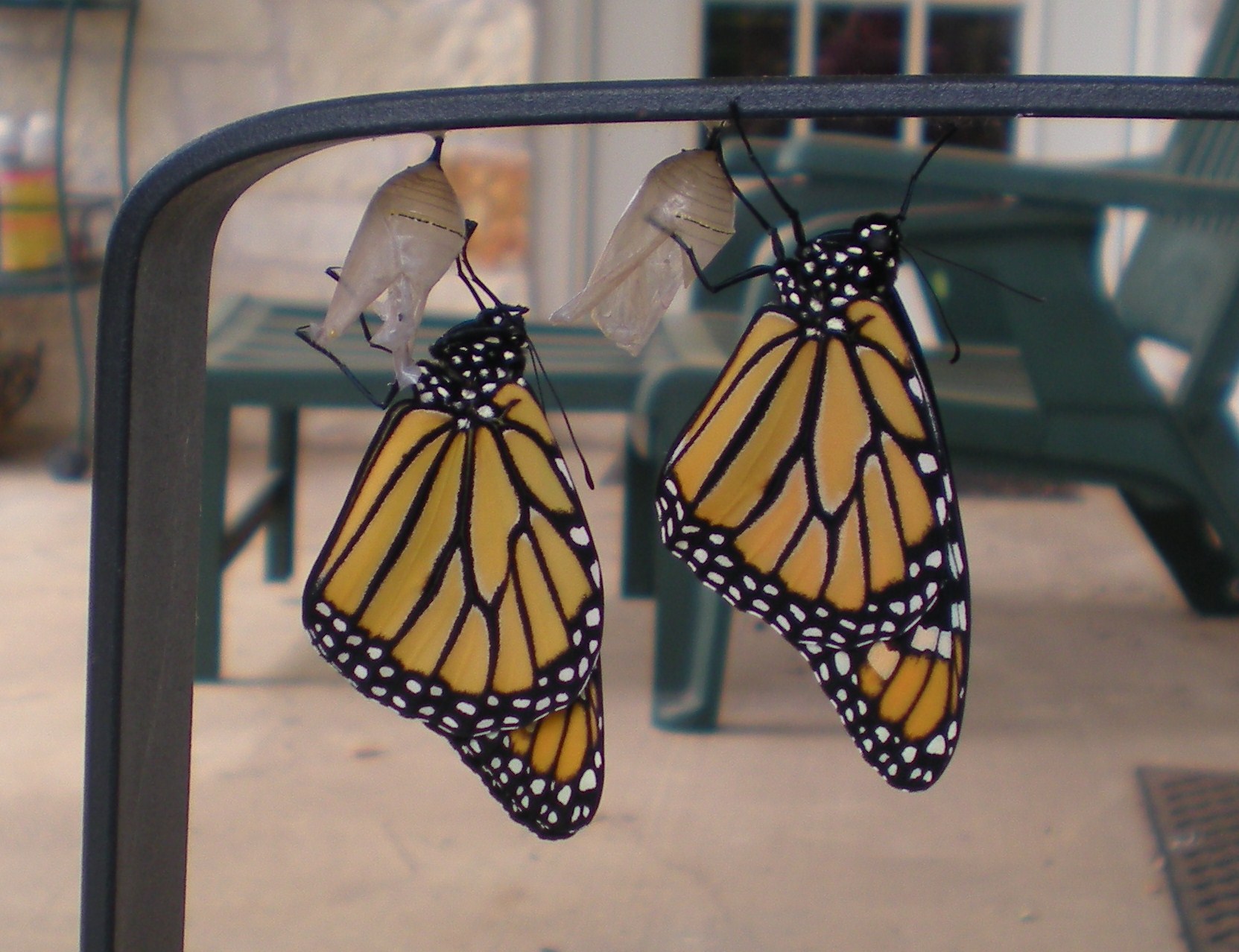I was given the gift of observing a miracle of nature right outside my door this spring.
It all started when I noticed one monarch caterpillar on the underside of our patio table. The next day there was a chrysalis where the caterpillar had been.
Then there was this guy on the arm of a chair.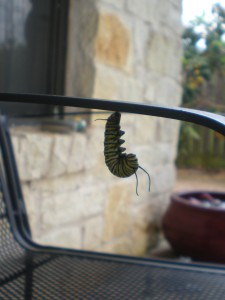
Another guy came along and couldn’t figure out how to get around him.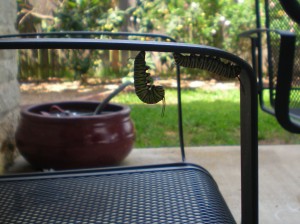
So he stayed. I called them The Twins.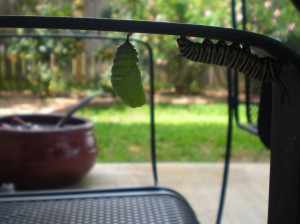
We had never seen anything like this in our backyard before. Sure, there had been an occasional caterpillar and maybe even a chrysalis. There is a greenbelt behind our house where milkweed grows, so it wasn’t unheard of. But over the next few weeks, I would count over 30 chrysalises. It was the fennel growing in an herb garden next to the patio that attracted the monarch butterflies bearing eggs.
I took on the role of mommy/protector – always on the lookout for eggs, baby caterpillars, mature caterpillars, caterpillars hanging like the letter J, the formation of a chrysalis, and the wait for a butterfly to emerge. I sat patiently, with my little Coolpix in hand, ready to document each developmental milestone. I offered encouragement: “You can do it! Almost there! Turn around so I can take your picture!”
Please indulge me while I save my memory of this. Click to enlarge the photos.
I was thrilled when I finally caught sight of a butterfly emerging from its chrysalis. As I watched the newly born butterfly test its wings (and other parts of its anatomy), it reminded me of a pilot going through a checklist before takeoff. One thing followed another in an orderly fashion. Once the wings were completely unfurled, the butterfly hung for some time. It would excrete a clear liquid and then open its wings a few times. Then it would close his wings and remain still except for small movements of its head. First it would move the left side of its head, then the right, and lastly that little circle of a tube or whatever it is for gathering nectar. It repeated this process again and again. Unfortunately I never caught sight of one taking flight for the first time.
I also learned that the odds of making it from egg to mature butterfly are not very good. Of the 30+ chrysalises I originally found, only 14 completed the metamorphosis to butterfly. There are tiny bugs that bore into the chrysalis and destroy it. Some looked ready to emerge from the chrysalis, but it never happened. About a fourth of the butterflies who made it out had damaged wings and were not able to fly. Add to that the eggs that never hatched, the caterpillars that died before maturing, and the mature caterpillars that died while trying to make the change to chrysalis form…. and you can see that it takes a lot of eggs to successfully produce just 14 butterflies. (After I thought I had found them all, I actually found a few on the overhang of our 2nd story deck and our back fence – so I think the total was more like 16/40.)
These two made a poor choice of location. There wasn’t enough clearance for the wings to unfold and they were damaged.
My husband found this one in the grass. We realized that it had a little something wrong with a wing and couldn’t fly properly. 🙁
I would sometimes catch a glimpse of a butterfly who had flown up to one of our trees.
Now when I see a monarch flying around my yard, I feel as though an old friend has come back for a visit.
I’ll end this post as I started it, with a photo of The Twins.
Copyright © Kathy Morales 2012 Includes all photographs as well as content.
*******
By the way, I learned the word “chrysalis” when my daughter was in Kindergarten. Apparently my education was lacking as I thought they were cocoons. I learned that cocoons are for moths. Chrysalises are for butterflies. Who knew?
Have you had an encounter with nature that captured your attention or left a lasting impression?

